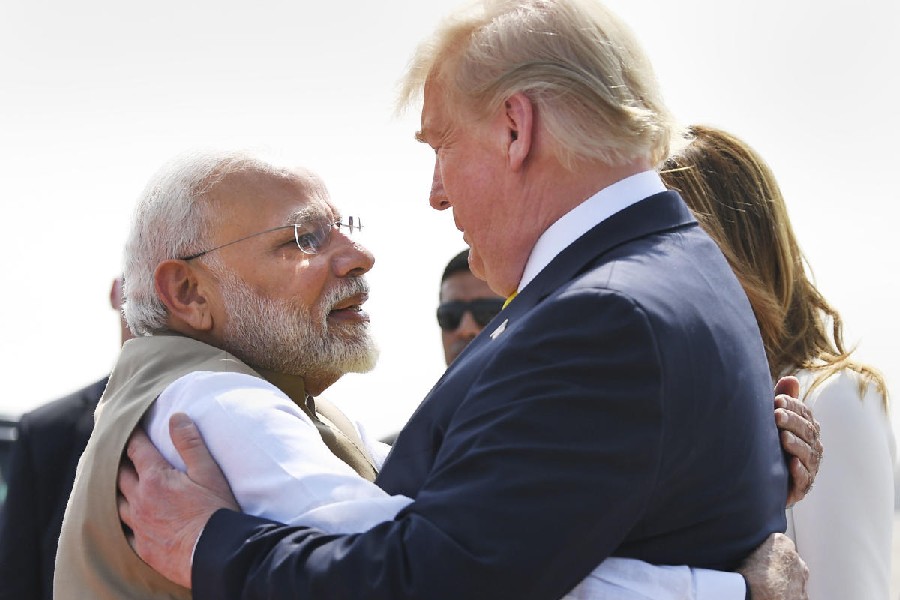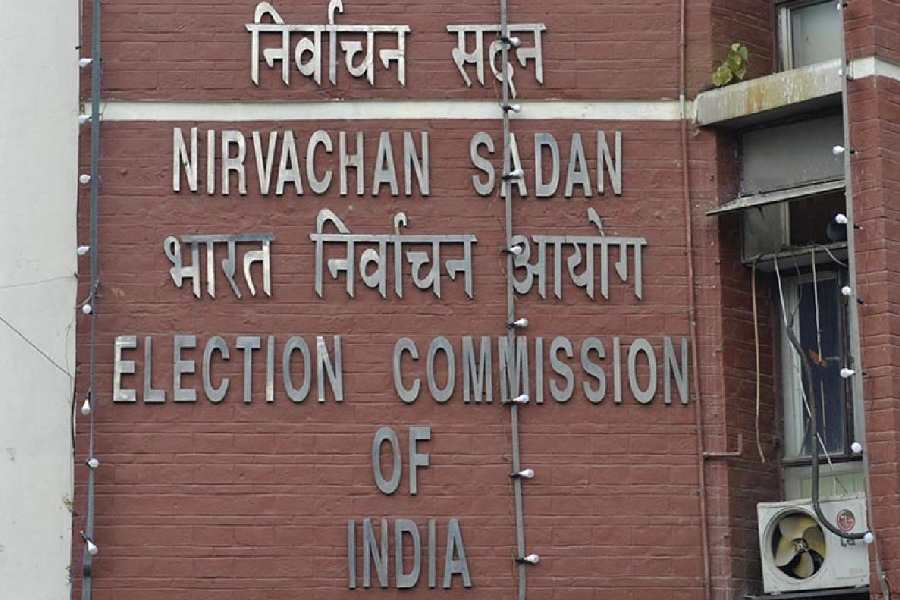.jpg)
That cricket is a "batsman's game" is often expressed as a lament. In an existential sense, though, a batsman's "solitariness" finds no parallel in any other sport, making him unique.
Simon Hughes, former Middlesex and Durham player and astute analyst of the game, captures this dimension superbly in his book Who Wants To Be A Batsman? "Batsmen have the best, and worst, of times,'' he writes. "They have the most fragile existence of anyone in sport. They are out on their own being preyed upon. They have half a second to react to the ball. They are walking the tightrope between success and failure. One miniscule error and they're toast...''
This seeps subliminally into our consciousness and perhaps explains why batsmen dominate conversations, headlines, not to mention game plans of opponents. Inevitably this also leads to debates about who is the best in a particular era.
When I took guard as a cricket writer in the late 1970s, the raging issue was about who was the best among Viv Richards, Greg Chappell, Sunil Gavaskar and Javed Miandad.
Richards was a brutal destroyer of bowlers, Chappell an imperious stylist, Miandad a crunchy, street-smart run accumulator and Gavaskar classically, technically correct - the Wren & Martin of batting technique so to speak.
Looking back, their records show a similar statistical trajectory. But numbers do not always tell the complete story. To pick the best from a cluster of superb players is a matter of nuance and subjective assessment as much as it is of records.
Could Richards have scored as many runs against his own mighty bowling attack as did Gavaskar? Chappell was never tested in Indian conditions, and there was always the grouse against Gavaskar and Miandad of being favoured by "home" umpires.
Leaving aside Sir Donald Bradman, who stands on a pedestal and is the only cricketer to be defined by a statistic (mind-boggling Test batting average of 99.94), such comparisons have dotted the history of the sport.
Every era in cricket throws up its champion batsmen. Soon after Richards, Gavaskar, Chappell and Miandad retired came Tendulkar, Lara, Ponting, Kallis, Dravid, Sangakkara: each with a distinctive batting personality, each with a legion of followers to swear by them.
The current era is hugely exciting where batsmanship is concerned, a field thick with triumphal talents - AB de Villiers, Hashim Amla, Steve Smith, Kane Williamson, David Warner, Joe Root and our own Virat Kohli. Collectively, they possess the dazzling virtuosity to enthral fans, keep statisticians working overtime and also stoke the debate about "best batsmen" of this era vigorously.
So who among these is top of the pops?
.jpg)
I'll make bold and pitch the contest in the long run between Kohli and Root who have emerged as the most rounded batsmen across formats in the past couple of years, scoring with an extraordinary degree of consistency.
Both have progressed from good to very good to brilliant in a hop-step-and-jump, as it were, after modest starts at the international level. Kohli was being stereotyped as a limited-overs specialist till his superb maiden century in Australia in 2011-12 as the Indian batting crumbled around him.
Since then, he has gone from strength to strength in every format, but more remarkably in Tests. From 2013, he has scored the most Test and ODI runs for India and been the team's most dynamic, authoritative, and reliable batsman. His performances reached a crescendo in Australia in 2014-15 when he scored 696 runs in four Tests, four tons included.
The ability to score runs in the most hos-tile conditions and against the toughest opponents is a feature of the truly great. This examination Kohli passed with flying colours.
Since that tour of Australia, he has become a different player. When captaincy was thrust on him suddenly, some feared his batting would suffer; the responsibility seems to have made him more focused and ambitious.
Root made his debut at Nagpur in 2012-13, a Test in which Kohli made a century. His obdurate approach reminded old-timers of another Yorkshireman Geoff Boycott as he made 73 in the first innings. Root's dogged determination - it thwarted India's bid to square the series - was immediately visible.

Typically English of technique and approach, Root seemed to lack the flourish of an attractive strokeplayer. But as in Kohli's case, 2013 was a turning point in his career. Since then he has developed into a scintillating batsman in every format.
The trigger to the transformation of both Kohli and Root was failure. In England in 2014, Kohli struggled badly in the swing-and-seam conditions.
Former team director Ravi Shastri believes his poor run of scores in England drove Kohli to rethink his game and life. "It is definitely after that tour that Kohli realised that he has a point to prove and decided to push the limits.''
Root, meantime, was running into problems against the Australians at home and away, a victim of their aggression and his own uncertainty against the short delivery. In a struggling side, he was able to just about retain his place after being shunted up and down the order, including opening the innings.
As happened with Kohli when he became captain, Root's batting bloomed under pressure of expectations. The decline of Ian Bell meant somebody had to contribute substantially in the middle order. Root rose to the occasion marvellously, and by 25 was vice-captain of the team.
But what helped Kohli emerge from his lean phase was the opposite of what helped Root: one had to curb his overt aggression while the other had to shed his inhibitions and add a streak of in-your-face spunkiness. In different ways, this helped in both becoming temperamentally and technically sounder. Kohli worked hard on tightening his defence and building up fitness, Root became more venturesome with his strokes.
They are contrasting personalities, their playing styles very different. Kohli's body language is strong and purposeful. His batting is based on a keen eye, supple wrists and splendid footwork.
He fairly bristles with aggression in the middle and his approach is jedi-like, using the bat as a weapon to tame, destroy and establish his suzerainty.
Root appears almost phlegmatic in comparison. His demeanour is soft, his stride to the middle is easygoing, almost languid. Unlike Kohli, he is rarely animated.
English rearing means Root's bat is straighter. He plays largely from the crease, his use of wrists largely functional, unlike Kohli who won't hesitate to get his bottom hand into action and on-drive a ball pitched even on the off-stump.
In the recent past, though, Root too has added to his repertoire. He uses the slog sweep and the upper cut over third man most tellingly.
The purpose of batting is to score runs, and at the crux of it is shot selection. Success comes as much from technical aptitude as self-belief. Both Kohli and Root have evolved to a stage where their batting evokes wows and aahs from fans and high peer acknowledgement.
"...I think in 10 years' time there's no doubt we'll be sitting with a glass of red saying, 'Wow, I'm lucky to have played with that Root fella - look at his record in all formats," said Stuart Broad after the Old Trafford Test where Root's double century was instrumental in England's win over Pakistan.
Meanwhile, Kohli's form this year has been Bradmanesque. In the T20 World Cup and in the IPL he was virtually unstoppable. In the first Test against West Indies he scored a double century, although the Caribbean bowling was no match to the Pakistani attack, Root struck his double ton against. Each time Kohli walks out to bat, there is a buzz on the ground, and nervous shuffling of feet from opponents. "He reminds me of myself,'' says Viv Richards. "We are looking at the real deal here."
Ambition is a recurring theme when Root and Kohli are discussed. To this, add tenacity, resilience and critical cricketing thinking which make them such formidable batsmen today.
The forthcoming packed home season will showcase Warner, Smith, Williamson, Root and Kohli as New Zealand, Australia and England tour India. Since all great players feed off each other's performances, the competition for being recognised as the best will be intense.
I dare say Kohli versus Root could be the clincher contest.

.jpg)








